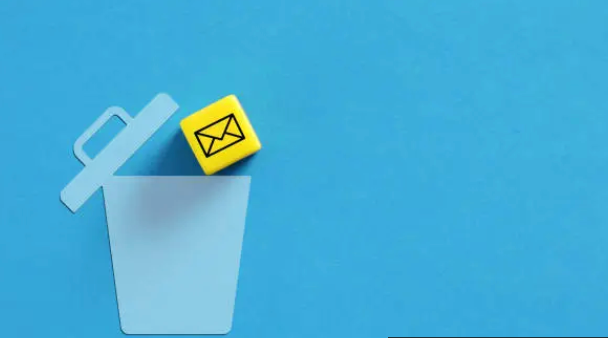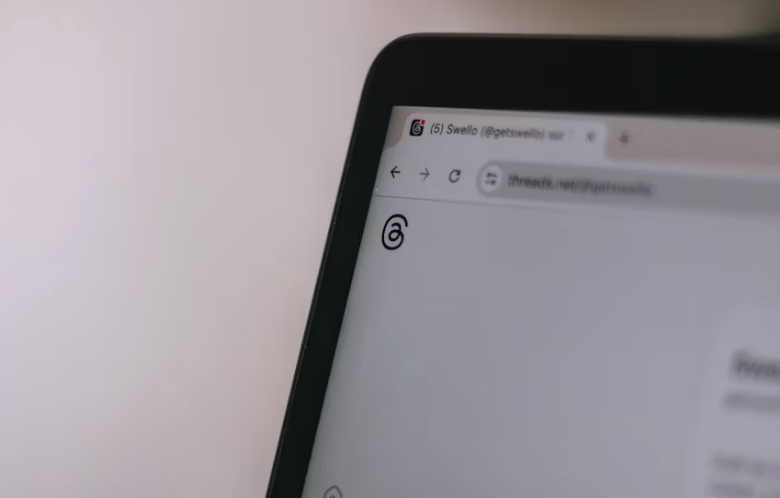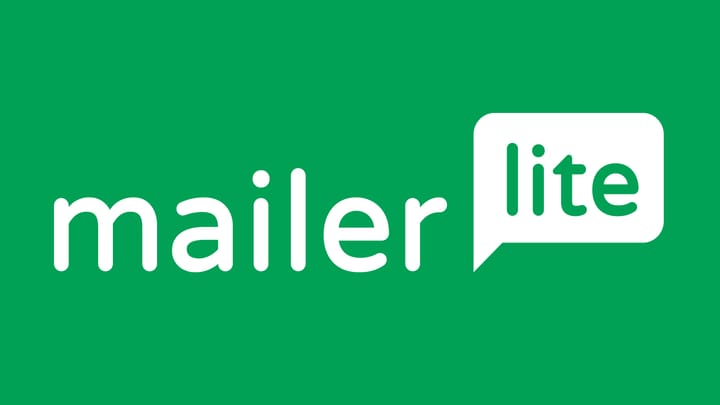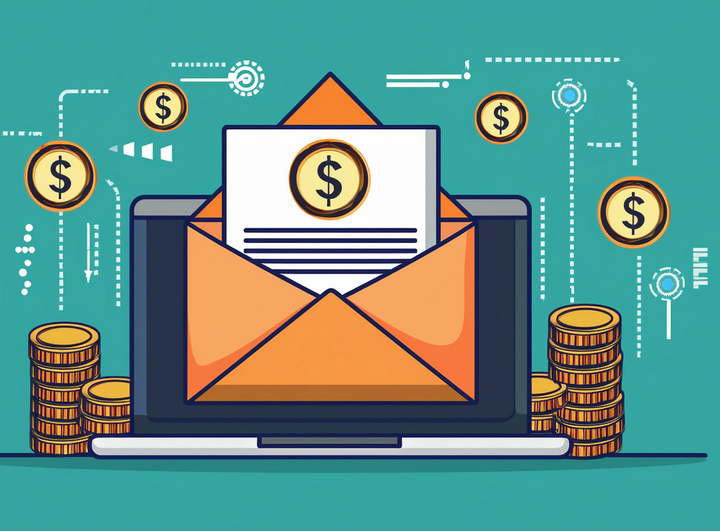Unsubscribe Best Practices: Making It Easy (And Why You Should)
Here's something that makes you think twice: making it ridiculously easy for people to unsubscribe from your emails is actually one of the smartest business moves you can make.

Here's something that makes you think twice: making it ridiculously easy for people to unsubscribe from your emails is actually one of the smartest business moves you can make.
We know, we know. It sounds backwards.
You've spent all this time building your email list, and now I'm telling you to make it easier for people to leave? But stick with me here, because this counterintuitive approach will actually improve your email performance, protect your business from legal trouble, and build stronger relationships with your audience.
The truth is, when someone wants out of your emails, they're going to find a way out. The question is whether they'll do it the easy way (by clicking unsubscribe) or the hard way (by marking you as spam). And trust me, you want them taking the easy route.
Poor unsubscribe practices don't just annoy your subscribers. They can tank your sender reputation, land you in legal hot water, and destroy your email deliverability. Let's dive into why making unsubscribing easy is actually a win-win for everyone.
The Legal Stuff You Can't Ignore
Before we get into the business benefits, let's talk about the law. Because ignoring these requirements isn't just bad for business, it can result in hefty fines that'll make your accountant cry.
1. CAN-SPAM Act: The Big Three Rules
If you're sending emails to people in the United States, the CAN-SPAM Act has some non-negotiable requirements:
First, you need a clear and conspicuous unsubscribe mechanism. This means no hiding your unsubscribe link in tiny text at the bottom of your email or making it the same color as your background. It needs to be obvious and easy to find.
Second, you have 10 business days to process unsubscribe requests. Not 10 calendar days, not "when you get around to it", 10 business days max. Most email platforms can do this instantly, so there's really no excuse for delays.
Third, you can't charge fees or create barriers to unsubscribing. There should be no requirement for people to log into their account, no need for them to call customer service, and definitely no charge for them to be removed from your list. If they want out, let them.
2. GDPR: Europe's Take on Email Rights
If you have European subscribers, GDPR adds another layer of requirements. The big one here is that unsubscribing must be as easy as subscribing was. If someone could sign up with one click, they should be able to leave with one click too.
GDPR also emphasizes the "right to withdraw consent," which means people can change their minds about receiving your emails at any time, for any reason, without having to justify their decision.
3. Other International Rules
Canada has CASL, the UK has PECR, and other countries have their own versions of anti-spam laws. The common thread? They all emphasize making unsubscribing easy and respecting people's choices about the emails they receive.
Why Easy Unsubscribes Are Actually Good for Business
Now here's where things get intriguing. Making it easy to unsubscribe doesn't hurt your business; it helps it. Here's why:
Your Sender Reputation Will Thank You
Email providers like Gmail, Outlook, and Yahoo are constantly watching how recipients interact with your emails. When someone can't easily unsubscribe and marks you as spam instead, it's like getting a black mark on your permanent record.
Spam complaints are email marketing kryptonite. Too many of them and your emails start landing in spam folders automatically, or worse—email providers might block you entirely. But when people can easily unsubscribe instead of hitting the spam button, your sender reputation stays clean.
Quality Over Quantity Wins Every Time
A smaller list of people who actually want to hear from you is infinitely more valuable than a massive list full of people who ignore or hate your emails. When disinterested subscribers leave easily, your remaining audience becomes more engaged.
This creates a beautiful cycle: higher engagement rates tell email providers that people like your content, which means better deliverability, which means more of your emails actually reach your audience's inboxes.
You're Playing the Long Game
Just because someone unsubscribes today doesn't mean they'll never be interested in your business again. Maybe they're overwhelmed with emails right now, or maybe their needs have changed temporarily. By making the unsubscribe process pleasant and respectful, you preserve the possibility of future re-engagement.
Compare that to someone who struggles to unsubscribe, gets frustrated, and walks away with a negative impression of your brand. Which scenario do you think is more likely to result in future business?

Getting the Technical Stuff Right
Alright, let's get into the nuts and bolts of actually implementing good unsubscribe practices.
One-Click Unsubscribe: The Gold Standard
The best unsubscribe experience is one click and done. No "Are you sure?" pages, no surveys (unless they're optional), and no additional steps. Click the link, get removed from the list, and see a confirmation message. That's it.
Most modern email platforms support something called the List-Unsubscribe header, which adds an "Unsubscribe" button right in the email interface (you've probably seen these in Gmail). This is as frictionless as it gets, and you should definitely be using it.
Also, make sure your unsubscribe process works perfectly on mobile devices. More than half of emails are opened on phones, so if your unsubscribe link is impossible to tap or leads to a page that doesn't work on mobile, you're creating unnecessary friction.
Design Your Unsubscribe Page Right
When someone clicks your unsubscribe link, where do they land? Hopefully on a simple, clean page that confirms their request has been processed. This page should:
- Clearly confirm they've been unsubscribed
- Not try to talk them out of their decision with guilt trips or manipulation
- Optionally offer alternatives (more on this later)
- Maintain your brand's professional appearance
Avoid dark patterns like pre-checked boxes that re-subscribe them to other lists, or confusing language that makes it unclear whether they're subscribing or unsubscribing.
Processing and Confirmation
Once someone unsubscribes, remove them from your active email lists immediately. Your email platform should handle this automatically, but if you're managing lists manually (please don't), make sure this happens fast.
Some marketers send a confirmation email after unsubscribing. This can be helpful—it confirms the action was completed and provides a way to re-subscribe if it was accidental. Just make sure this confirmation email doesn't feel like another marketing message in disguise.
Making the User Experience Smooth
The devil is in the details when it comes to unsubscribe user experience.
Placement and Visibility
Your unsubscribe link should be in the footer of every marketing email, and it should be easy to find. Don't make people hunt for it with a magnifying glass. Use a reasonable font size, make sure there's enough color contrast to read it, and keep it in the same place across all your emails so people know where to look.
Give People Options
Before someone unsubscribes completely, consider offering alternatives. Maybe they don't want to hear from you every day, but they'd be okay with weekly emails. Maybe they're only interested in certain types of content. A simple preference center can capture these nuances and keep subscribers engaged at a level that works for them.
Options might include:
- Reducing email frequency
- Choosing specific content topics
- Taking a temporary break (great for vacation seasons)
- Switching to a different email address
Just make sure these options don't get in the way of people who really do want to unsubscribe completely.
Learn from the Exits
Consider adding an optional (emphasis on optional) survey to your unsubscribe process. Keep it short – maybe just one question about why they're leaving. The insights you gain can help improve your email program and reduce future unsubscribes.
Common reasons people unsubscribe:
- Too many emails
- Content isn't relevant anymore
- Never signed up in the first place
- Email address is changing
- Just cleaning up their inbox
Each of these reasons suggests different potential solutions.

Mistakes That'll Get You in Trouble
Let's talk about what not to do, because these mistakes can seriously damage your business.
Dark Patterns Are a No-Go
Dark patterns are design choices that trick users into doing something they didn't intend to do. In the unsubscribe world, this might look like:
- Hiding the unsubscribe link in a wall of tiny text
- Using the same color for your unsubscribe link as your background
- Having fake unsubscribe links that don't actually work
- Making people jump through multiple confirmation pages
- Pre-checking boxes that sign them up for other lists
Don't do any of this. It's manipulative, it's often illegal, and it destroys trust.
Technical Failures Kill Trust
Nothing frustrates people more than trying to unsubscribe and having it not work. Common technical problems include:
- Broken unsubscribe links
- Links that lead to error pages
- Slow processing that makes people think it didn't work
- Continuing to send emails after someone unsubscribes
Test your unsubscribe process regularly. Click your own links, make sure the pages load quickly, and verify that unsubscribes are actually being processed.
Legal Violations Aren't Worth the Risk
We covered the legal requirements earlier, but it's worth repeating: don't charge fees for unsubscribing, don't make it harder to unsubscribe than it was to subscribe, and always provide a clear way out.
The fines for violating these laws can be substantial. CAN-SPAM violations can cost up to $43,792 per email. That adds up fast.
Advanced Strategies for Smart Marketers
Once you've got the basics down, there are some sophisticated approaches you can use to minimize unsubscribes while still respecting people's choices.
Preference Centers Done Right
A well-designed preference center is like a relationship counselor for you and your subscribers. Instead of breaking up entirely, you can find a middle ground that works for both of you.
Your preference center might allow people to:
- Choose how often they hear from you (daily, weekly, monthly)
- Select which topics they're interested in
- Decide which types of emails they want (newsletters, promotions, announcements)
- Set preferences for different communication channels
The key is making this genuinely useful, not just another obstacle to unsubscribing.
Re-engagement Before Goodbye
Before someone reaches the point of unsubscribing, try to re-engage them. If someone hasn't opened your emails in months, send them a "We miss you" campaign with a compelling offer or valuable content.
You can also implement sunset policies that automatically remove inactive subscribers after a certain period. This keeps your list clean and your engagement rates high.
Automation Makes It Seamless
The best unsubscribe systems run automatically. When someone clicks unsubscribe, they should be removed from all relevant lists immediately, added to your suppression list so they don't get re-added accidentally, and the whole process should happen without any manual intervention.
If you're using multiple email platforms or have complex segmentation, make sure your unsubscribe process works across all of them. Nobody wants to unsubscribe from your newsletter only to keep getting your promotional emails.
Measuring Your Success
How do you know if your unsubscribe practices are working? Track these key metrics:
The Numbers That Matter
Unsubscribe rate: Generally, anything under 2% is considered good, but this varies by industry. More important than the absolute number is the trend – are your unsubscribe rates going up or down over time?
Spam complaint rate: This should be as close to zero as possible. If it's above 0.1%, you've got problems.
List growth vs. churn:Are you gaining more subscribers than you're losing? And are the new subscribers actually engaging with your emails?
Engagement metrics: After cleaning up your list through easy unsubscribes, you should see improvements in open rates, click-through rates, and other engagement metrics.
Benchmarking and Analysis
Compare your metrics to industry standards, but more importantly, compare them to your own historical performance. Look for trends and patterns. Do certain types of emails generate more unsubscribes? Do unsubscribe rates spike after particular campaigns?
Use this data to continuously improve your email program. Maybe you'll discover that your audience prefers less frequent emails or that certain subject lines tend to annoy people.
The Bottom Line
Making it easy for people to unsubscribe from your emails isn't just the right thing to do. It's the smart thing to do. It keeps you on the right side of the law, improves your email performance, and builds trust with your audience.
Remember, email marketing is about building relationships, not trapping people. When you respect your subscribers' choices and make it easy for them to control their email experience, you create a foundation for long-term success.
The goal isn't to prevent all unsubscribes—it's to make sure the people who stay on your list actually want to be there. Those engaged subscribers are worth their weight in gold, and they're the ones who will drive real business results for you.
So start with the basics: make your unsubscribe link easy to find, process requests quickly, and don't put obstacles in people's way. Then, as you get more sophisticated, experiment with preference centers and re-engagement campaigns.
Your subscribers will appreciate the respect you show them, your email performance will improve, and you'll build a more sustainable, effective email marketing program. It's a win-win situation that starts with a simple philosophy: treat people the way you'd want to be treated.
With platforms like Maileroo, implementing these best practices becomes straightforward, giving you the tools to build trust while maintaining a healthy, engaged email list that drives real business results.



